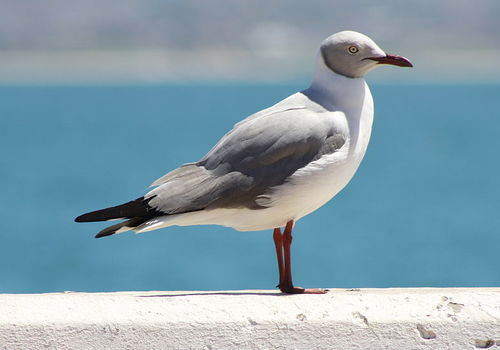
Grey headed gull
Larus cirrocephalusGrey headed gull
Introduction: Grey-headed gulls (Larus cirrocephalus) are often sighted along the coast, coastal islands, lagoons, estuaries and harbours, pans, dams, lakes, rivers and sewage ponds.
Distribution: Absent from southern Namibia but common and widespread in coastal Namibian ranges such as Swakopmund and Walvis Bay, the Skeleton Coast as well as many sightings in Etosha National Park, Tsumkwe, Kaudom Game Park, Caprivi, Chobe and Zambezi Rivers, Victoria Falls, the Okavango Delta and Moremi Game Reserve.
Diet: Aquatic invertebrates such as molluscs as well as frogs, fish, insects, eggs and chicks of other birds.
Description: Cirrocephalus is Latin for 'grey headed'. Often confused with Hartlaub's gull which is slightly smaller with shorter bill and legs.
Breeding: Breeds on islands, mostly in wetlands. Usually 3 eggs are laid in a shallow bowl made of grass, twigs and weeds.
Size: 40cm.
Weight: 280g.
Wingspan: 100cm.
Klein Windhoek

